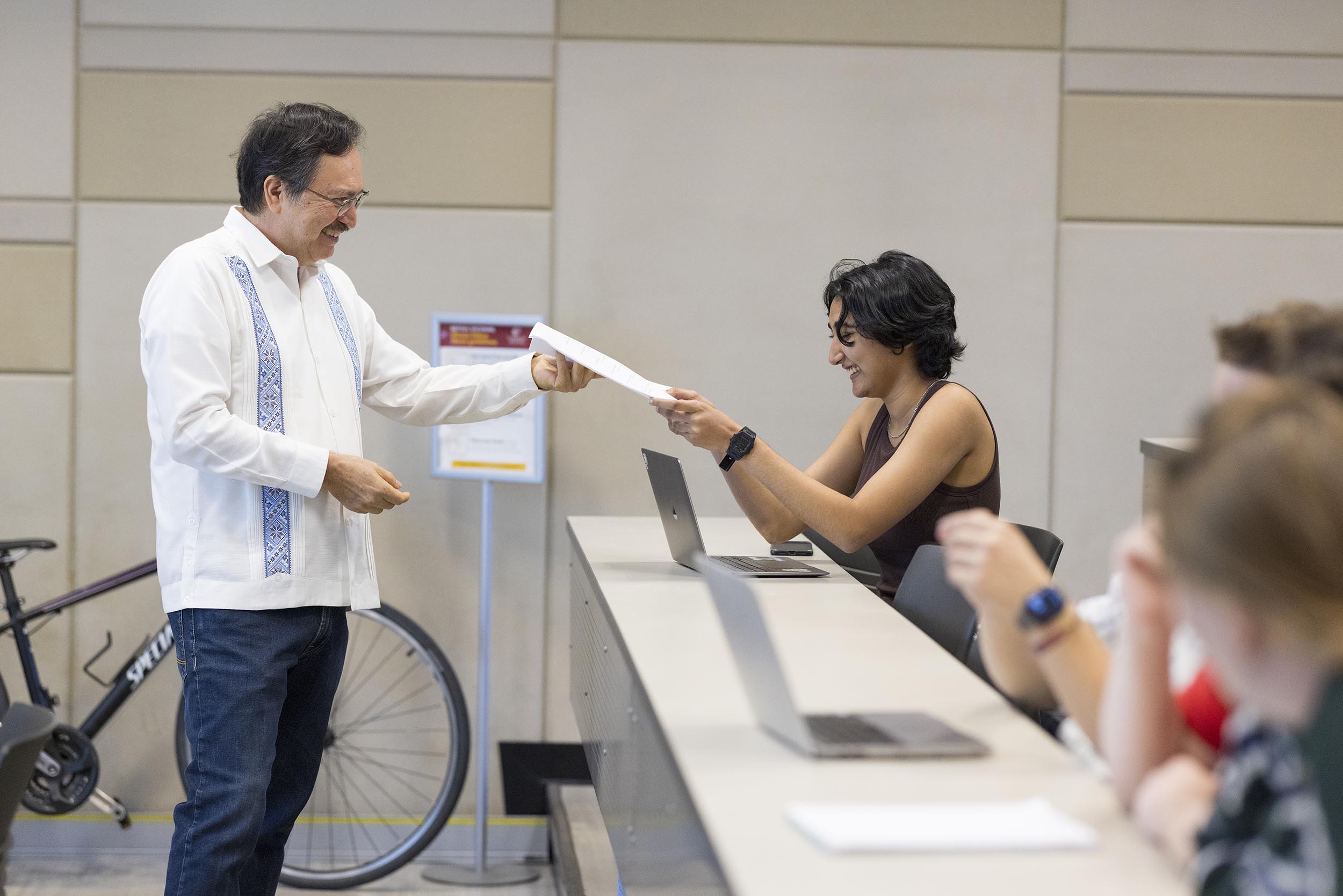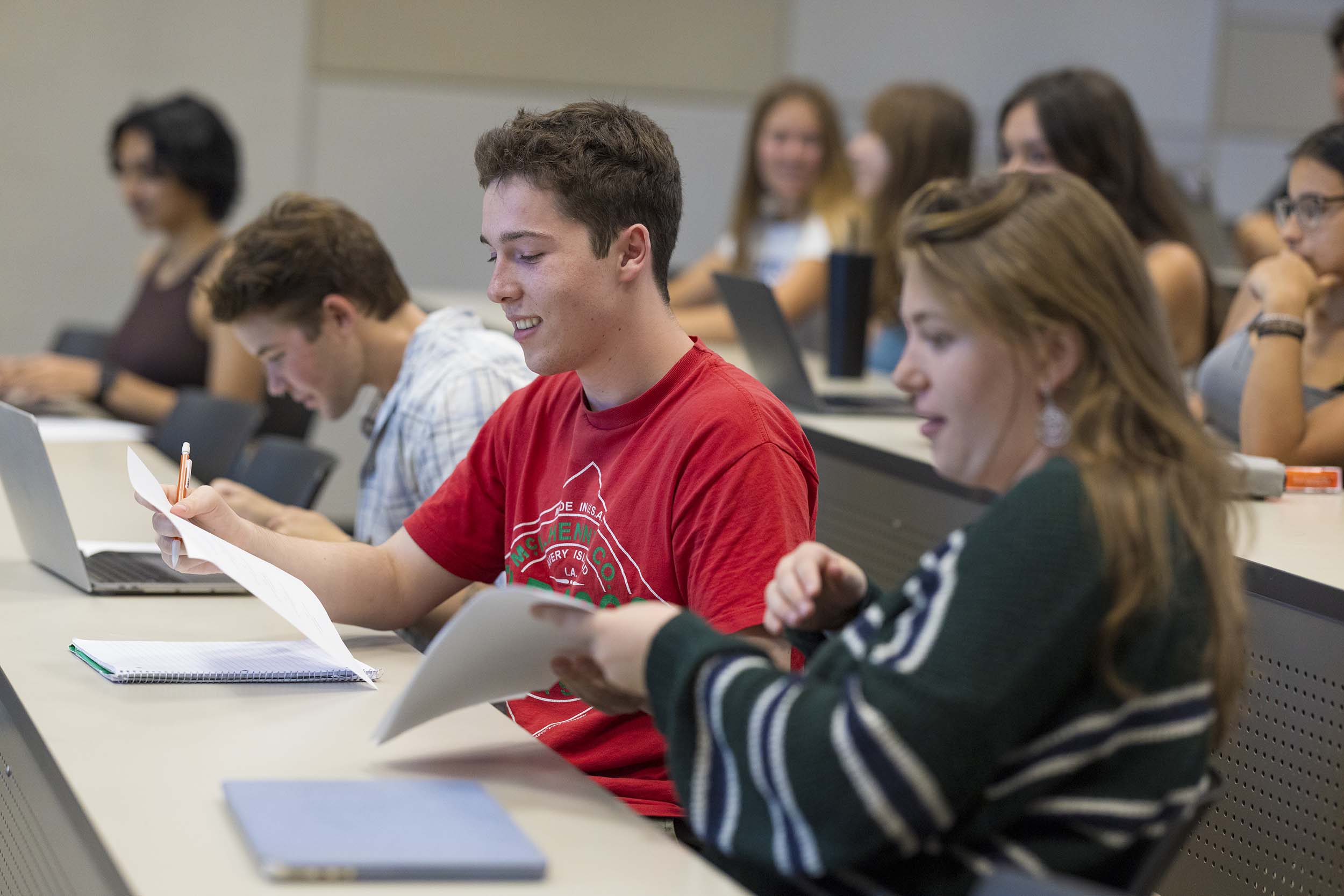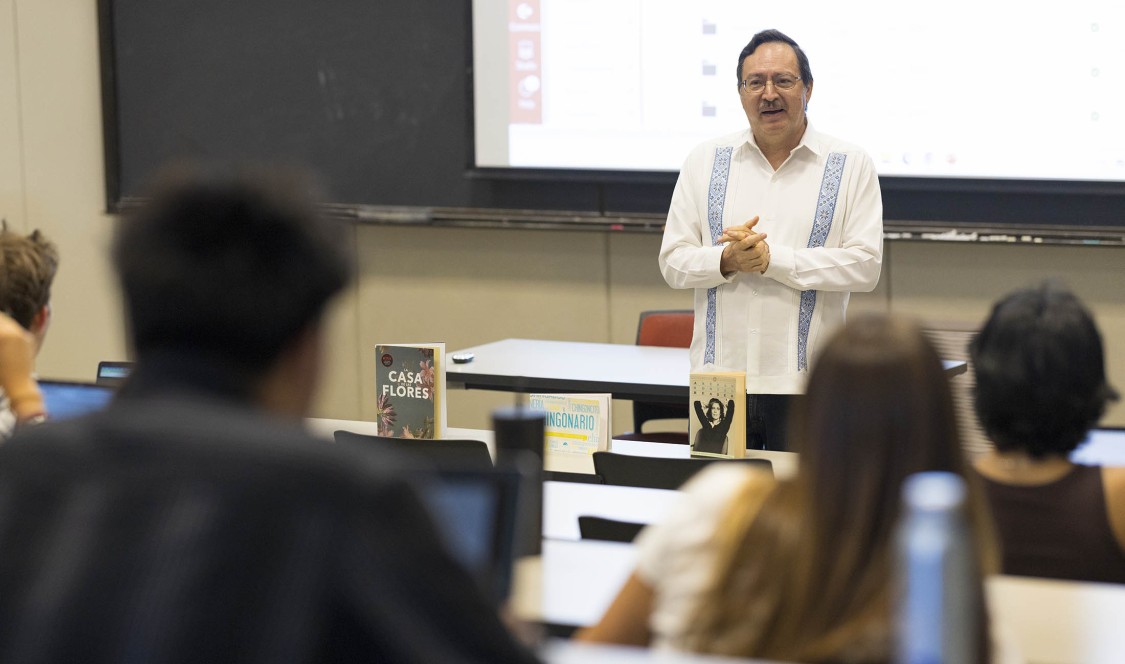Longtime faculty member Salvador Velazco, Associate Professor of Latin America Cinema and Literature, will soon celebrate 30 years with CMC. Both an observer and instigator of change, he recently reminisced about where he started, how his department has evolved in size, strength, and impact, and what has been most important to him along the way.
Below, find out why “cinema is better than life” and how Velazco has been instrumental in building community and advancing international education at CMC.
You’ve been teaching at CMC since 1997. What comes to mind as you reflect on almost three decades with the College?
I feel fortunate to be part of an excellent academic institution like CMC. It seems like only yesterday when I started working in the Department of Modern Languages and Literatures—it’s incredible how time flies. I’ve seen the College undergo significant changes, expanding both physically and academically, and my department has grown immensely as well.

When I arrived at CMC, only one professor was teaching Spanish, and I am proud to have helped build our program to having around 10 instructors offering about 50 sections per year at one point. Not only did the Spanish program grow, the French and Korean programs evolved as well, and we have added two more languages: Arabic and Portuguese. I believe that the growth of the department has played an important role at CMC by helping students develop linguistic skills and cultural competencies that are essential for thriving in today’s global society.
I’ve always been a proponent of having more students and professors from underrepresented backgrounds at CMC. Diversity in a liberal arts college is crucial for so many reasons—one of them is to prepare students to work and live in a diverse and increasingly interconnected world.
Tell me about a class you’re teaching this semester.
I’m teaching “Latin American Series in the Age of Netflix.” I created the class to provide students with analytical tools to answer a crucial question: “What are these series telling us about contemporary Latin American societies, especially about the representation of nation, gender, ethnicity, class, and socioeconomics?”
We study several Latin American series by exploring their “poetics”—the formal elements that distinguish the series from other forms of visual storytelling and the most popular genres, such as light comedies, mystery/thrillers, narco-fiction, and crime, and their “politics”—the most relevant social and cultural themes related to society at large.
Practically, all our students become “viewers” in this era of streaming television. Therefore, this course will make students think about the motivations and interests that lead them to the consumption of content. In that sense, I am expecting that students taking this course become more aware and critical of their own cultural practices.
How did you become interested in Latin American cinema and literature?
I can summarize it in one sentence: to me, cinema is better than life. Seriously. Movies often offer us a temporary escape from the harsh reality and challenges of life. I have a Ph.D. in literature, but I have always had a passion for cinema, and now for TV series as well.

I think that professors of literature, like me, are increasingly teaching cinema courses because it is a great way of providing students with a more comprehensive understanding of storytelling and cultural analysis. Professors who specialize in cinema studies in the U.S. typically don’t teach Latin American cinema, but professors in departments of modern languages and literatures across the country are filling this gap: We understand it without subtitles. The courses I teach on cinema in Spanish attract many students. I can say the same thing about series in this age of streaming television: TV series are like the “new cinema” of our times.
How does your teaching and mentorship extend to students outside of the classroom?
I really like engaging with students outside the classroom to help build a better sense of community and encourage them to develop a deeper appreciation for Latin America in general, especially Mexico, my native country. I have organized cultural events like film screenings, book presentations, and field trips to cultural sites, and enjoy inviting colleagues and guest speakers from Latin America to share their experiences and insights. For many years, I coordinated the Tutorial Program in Spanish, holding regular meetings outside of classes where students could converse in Spanish. I am also happy to report that during my time at CMC, I have directed dozens of senior theses related to Latin American politics, history, culture, literature, and cinema. It is always a pleasure to provide guidance and support to students.
What’s the most rewarding part of being part of the CMC Department of Modern Languages and Literatures?
I find working with amazing colleagues in a spirit of great collegiality to be very rewarding. All of us take the responsibility of the College’s mission to build responsible leaders very seriously. Through offering a broad array of courses in foreign languages, literatures, and cultures, our department plays an important role in defining CMC’s focus on international and global education. For me, it has been a privilege to do my bit as a member of the department for almost three decades.

